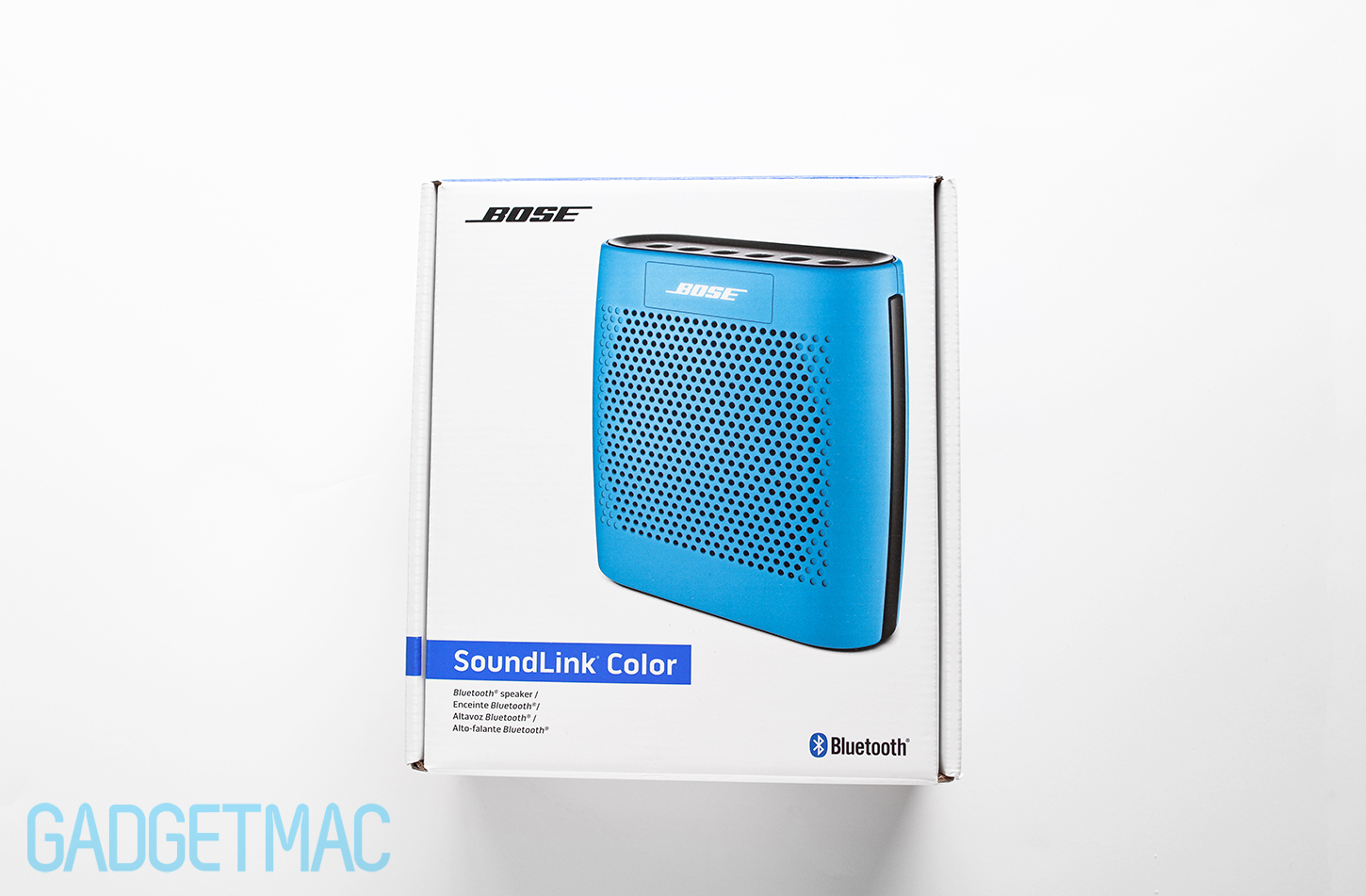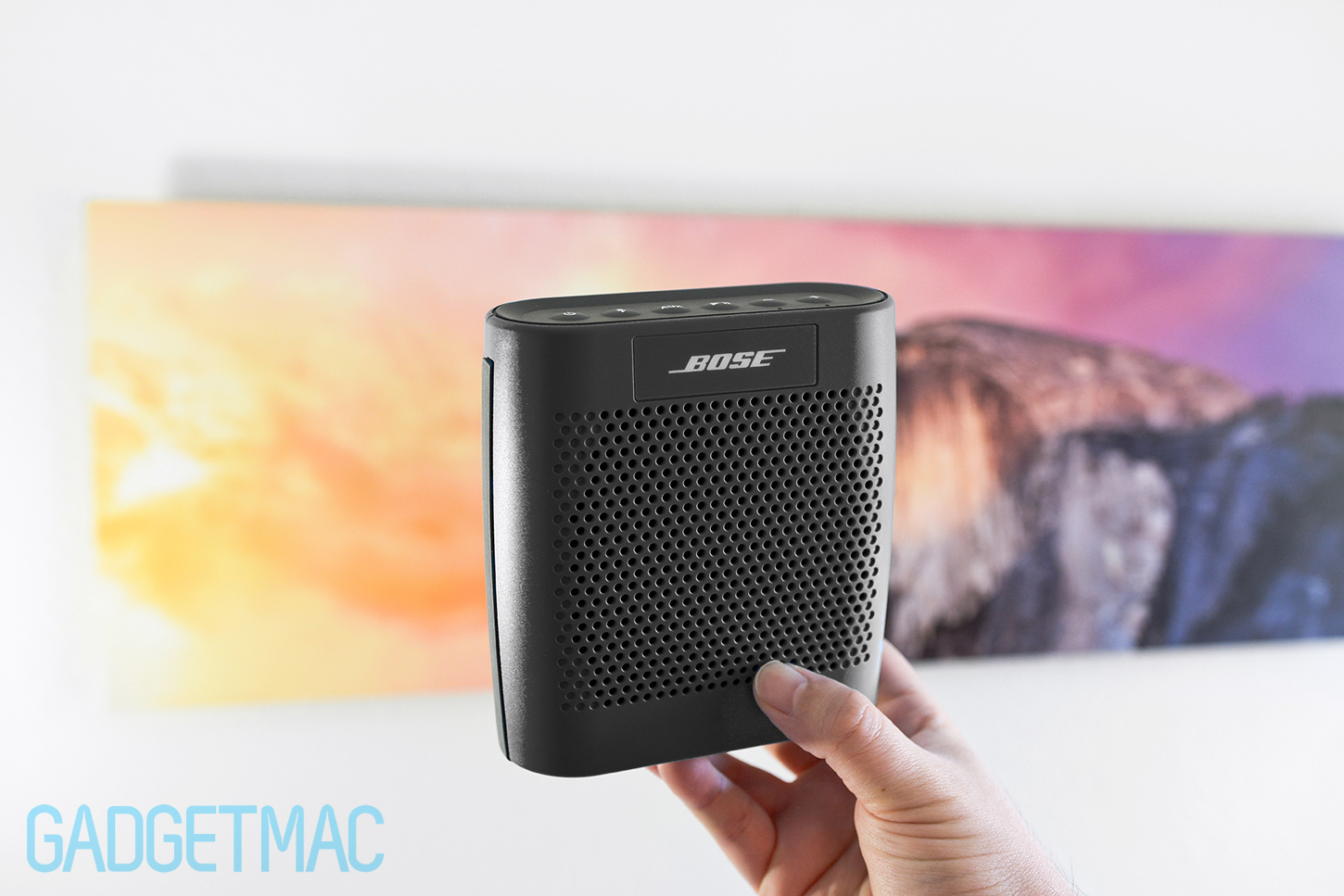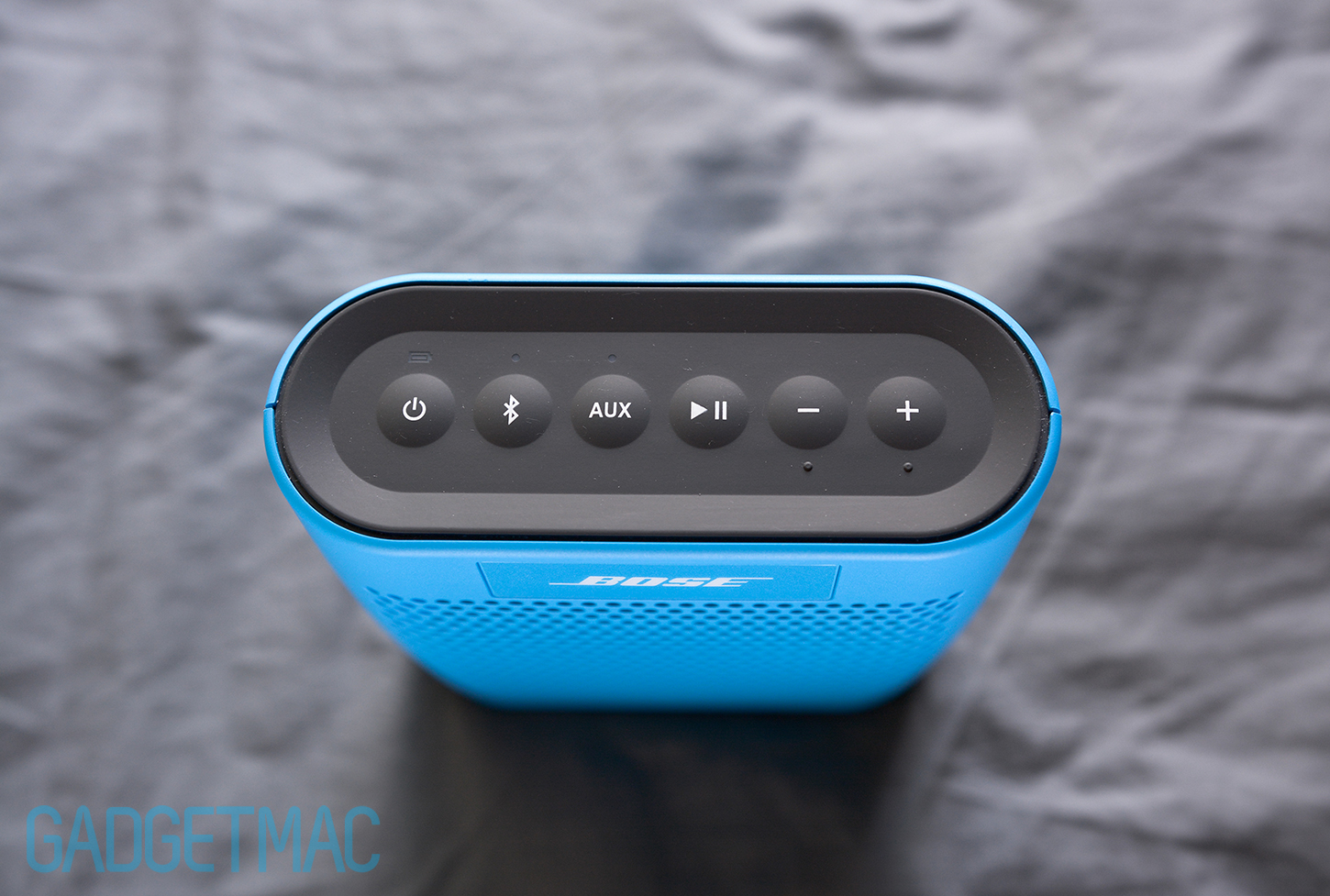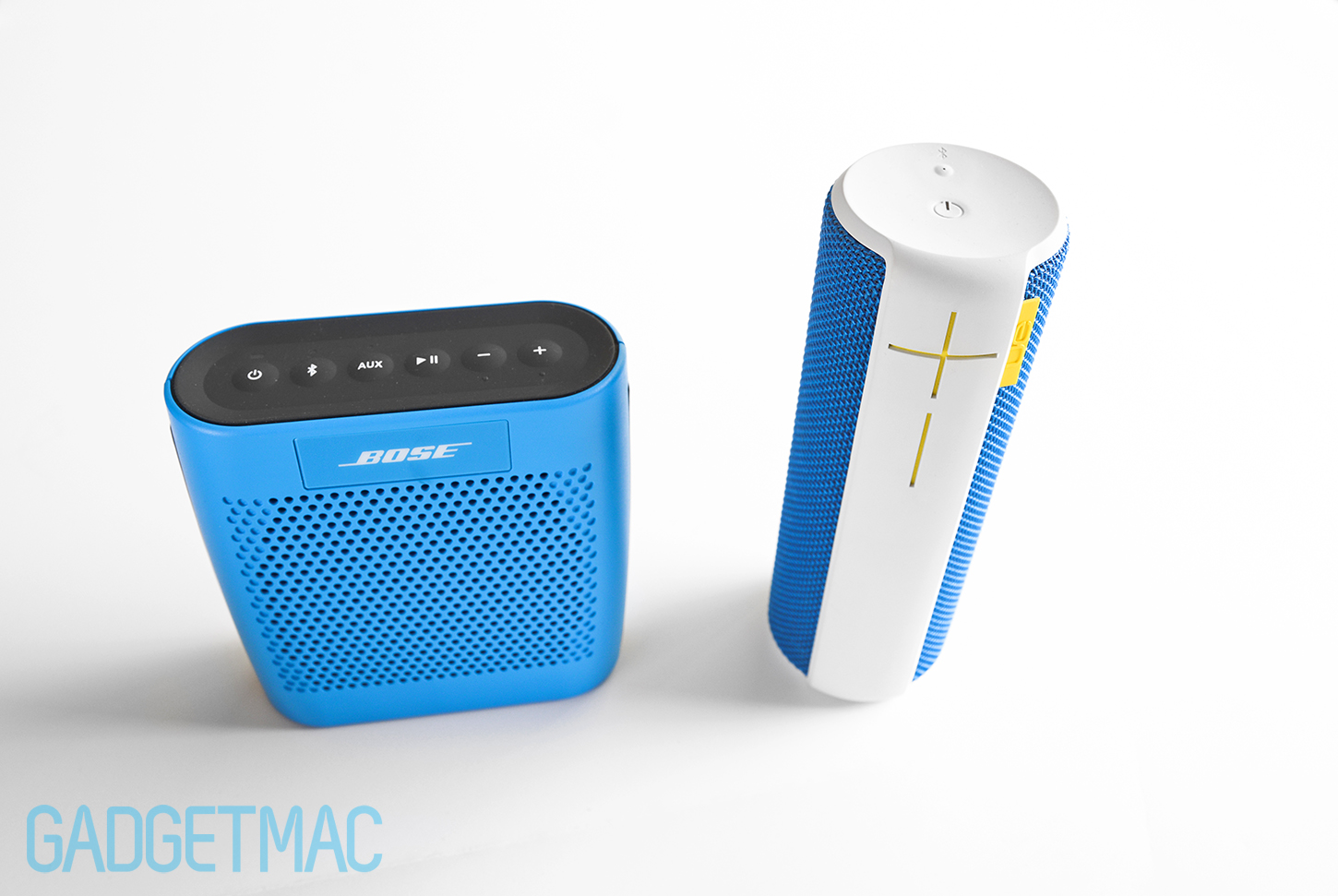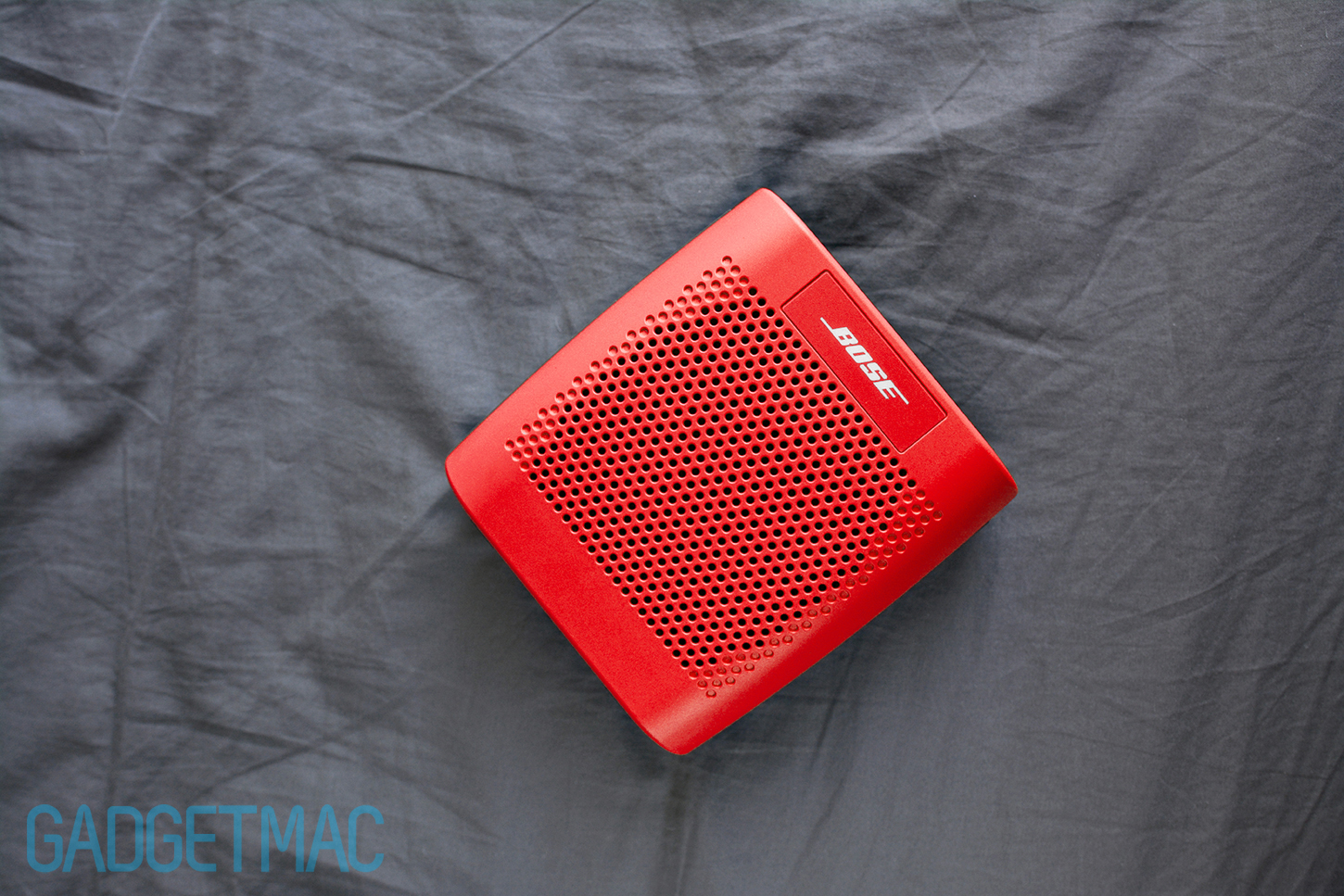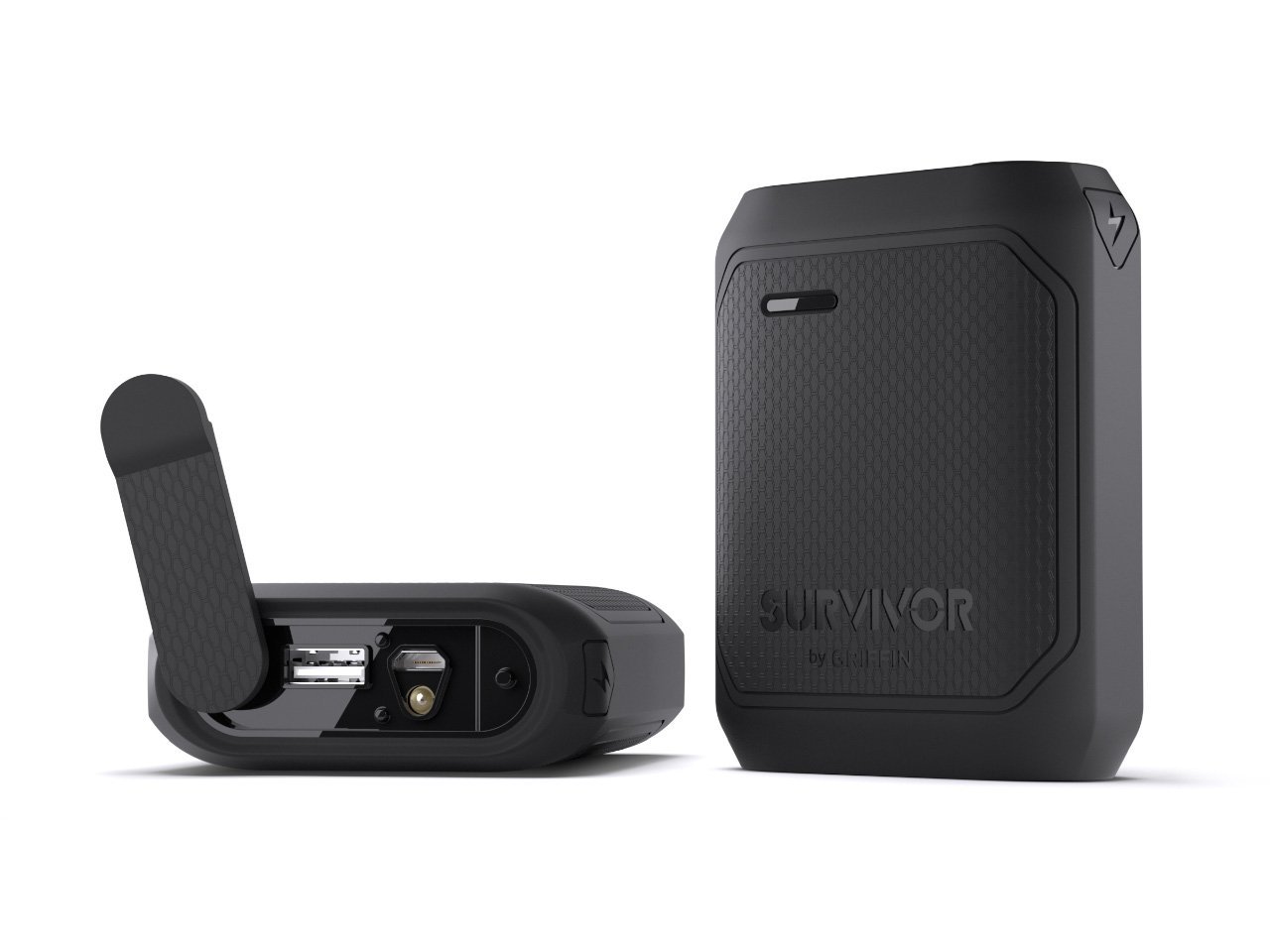Bose SoundLink Color Review
/Bose is back with its second highly portable wireless Bluetooth speaker called the SoundLink Color. Not to be confused with the more premium aluminum-made SoundLink Mini, this isn't quite yet the successor to one of the greatest portable speakers ever made, but instead a more affordably priced and colorful addition to Bose's growing lineup of wireless speakers. Offered in white, black and three other vibrant colors to match your style, the SoundLink Color has a compact form factor and boasts a quirky new original design we haven't yet seen before, and up to 8 hours of battery life. Like the SoundLink Mini, the new SoundLink Color features dual passive bass radiators and dual dynamic drivers that Bose claims produce clear, full-range balanced audio. As always, we're going to put it to the test to see how the SoundLink Color compares to its more expensive metallic brother as well as a few other noteworthy portable Bluetooth speakers. Our full and in-depth review can be found waiting for you just below this bit of text.
You can tell Bose didn't spend as much into the packaging of the SoundLink Color like it has for the SoundLink Mini, which is understandable given the lower price of admission. You're greeted with a rather simple and easy to open flip-open cardboard packaging. Nothing fancy, just utilitarian.
Inside the box, you get an identical Bose USB wall power adapter like the one included with the SoundLink Mini, which is ultra compact but thankfully this time it doesn't come with a fixed cable and an odd proprietary charging connector at the end. A charging dock isn’t included with the SoundLink Color, but there is a standard Bose-branded detachable micro-USB to USB charging cable included so that you can either use it with the included wall charger or use any other USB port to charge the speaker up. And of course you’ll also find some basic user instructional guide outlining some of the features and battery status indicators of the SoundLink Color and how to get started out of the box. We’d usually tell you to skip on the reading materials, but if you’ve read them in this case than you’d know that you would first need to fully charge the SoundLink Color straight out of the box as it doesn’t come pre-charged.
As for accessories like colorful silicone sleeves that are available for the SoundLink Mini, Bose did not make any colorful accessories for the SoundLink Color as it already combines the qualities of a protective case and colorful accents in one, durably made speaker that comes in a selection of multiple colors. Although there is the Bose neoprene carry case with a reversible cover that offers two different looks specifically designed for the SoundLink Color, but we wouldn’t recommend spending $25 on it as the SoundLink Color is made out of durable materials that don’t need to be carefully protected. Also, it has no additional space for the charging adapter and cable which is a huge letdown.
At first glance, the SoundLink Color sort of looks like a mono speaker in the way that it's designed. It also sounds like one due to the close proximity of the front-facing drivers, but there are indeed two drivers and two back to back passive bass radiator inside for stereo sound. Then again because of how the SoundLink Color is designed, there's really little stereo separation to notice. The output is one-directional, meaning the SoundLink Color only outputs sound through the front instead of delivering a wider range of sound more like omni-directional portable speakers such as the Ultimate Ears UE Boom, Sol Republic Deck Ultra by Motorola, NudeAudio Super-M and Bang & Olufsen BeoPlay A2. But we'll talk more on how it actually sounds later on.
As far as design, I think the SoundLink Color looks fantastic in its own unique way. The colorful styling and flattened upright shape is quite attractive and might I even say...original. The large perforations on the front grille give the SoundLink Color an almost retro walkie talkie-esque look compared to the very industrial precision speaker grille on the SoundLink Mini and SoundLink 3 speakers. But I still would much prefer a plastic-made version of the SoundLink Mini instead. There's something about the SoundLink Color that doesn't make a whole lot of sense. Designing a stereo speaking with a boxy form factor is never a good idea.
When you first power on the SoundLink Color, it'll voice prompt you to select your native language which I thought was really cool. It's the first time I've come across this and it's nice to see that Bose is looking out for non-English speaking users around the world. Not that it's really needed as you can safely pair the speaker with your device all on your own just like you would any other wireless gadget. After you've set your desired language, the speaker will guide you through the initial Bluetooth pairing process and will also let you know which device it has been paired up with in case you decide to switch between two different audio sources. Pairing could not have been any easier than this. Just open up your Bluetooth settings and tap on the SoundLink Color name. The speaker will then connect to your device within seconds. Bluetooth pairing and connectivity has in or experience been absolutely flawless, even when used with Apple's latest iOS devices.
You would think that since Bose has gone through the trouble of giving users the option to choose their native language on start up would amount to having some really useful voice command features, which sadly isn't the case at all. Unlike other Bluetooth speakers with voice commands such as the UE Boom, which is capable of speaking out such things as the remaining battery life in detailed increments, all the SoundLink Color does is tell you if it is pairing with your device or if your battery is low. Very basic stuff that really isn't taking any advantage of a modern speaker's capabilities. Speaking of the battery, battery life has been really great. The SoundLink Color's rechargeable battery lasts up to 8 hours under moderate volume, which is an improvement of an additional one hour compared to the SoundLink Mini.
On top you have a set of rubberized controls consisting of mushy circular buttons with very springy tactile feedback. Among the obvious power and Bluetooth controls there's also an auxiliary button which allows you to switch from wireless Bluetooth connectivity to the 3.5mm audio input. To the right is a multi-function play/pause button that can be double pressed to switch a track forward or triple pressed to switch to a previous track, and two volume up/down buttons. Bose must hate implementing convenient features because like its SoundLink Mini, the SoundLink Color does not have any speakerphone support - unlike the Charge 2, SRS-X3 and a boatload of other portable speakers alike.
The SoundLink Color features similar controls and LED indicators above the buttons that you would also find on the SoundLink Mini. For example, small white LEDs above the Bluetooth and Aux buttons light up to display a certain type of status whether it's a pairing process or simply an indication wo which connection you're using - Bluetooth or a wired input connection. The battery indicator above the power button lights up green when the battery is close to being fully charged, an amber color means the battery is around half full, and a blinking red battery indicator means that the battery is running low. When the speaker is turned on, you can also press and hold the power button to display the battery status for a few seconds.
Taking a look around the speaker we can see that it has a micro-USB charging port along with a 3.5mm audio input for connecting a non-Bluetooth audio source using your own cable.
It's not waterproof, water-resistant nor is it made out of carbotanium. Which is a bit disappointing I'd have to say, but then again you're not spending more than $130 on it. In fact that's exactly how much the SoundLink Color will set you back. It's made entirely out of plastic. Even the somewhat large and distinct cheese grater-like speaker grille is one solid piece of plastic. And that's just it, the SoundLink Color is still a very solidly made plastic portable speaker. The grade of the plastic material Bose used to construct the SoundLink Color is indeed of high quality. It actually reminds me a lot of the textured plastic that Bose used to make the FreeStyle in-ear headphones. In no way does it have a cheap plasticky feel, but I would say that the SoundLink Color’s build quality simply doesn’t come close to the more premiumly made SoundLink Mini. And really that’s to be expected given the price difference and obvious difference in material use. The SoundLink Color has a sturdy rounded form factor that seems like it could take quite the beating of daily usage on the go.
Bose incorporated this rubber U-shaped outer bumper around the sides of the speaker which adds a bit of extra protection against drops as the rubber does slightly protrude above the rest of the plastic body of the speaker itself. The bottom rubber feet keep the speaker firmly in place when it's being used, preventing vibrations from moving it around. If you place the SoundLink Color flat on its back on a table while playing music, it will move around from the vibrations that its passive radiators produce so these rubber feet clearly are doing their job.
Looking around the speaker you can also see the somewhat crude assembly of the SoundLink Color in that it hides the screws that keep the two front and back pieces of the speaker together using some very outdated design techniques that we rarely see these days on personal gadgets. The visible circular screw plugs look as if Bose brought an old 90s computer speaker back to life. Not that it sacrifices the integrity of the construction in any way, but it's still distasteful as ever and not something you'd expect to find on a modern consumer product.
The SoundLink Color comes in at a more affordable price point of $130, compared to its more premium brother - the $200 SoundLink Mini. The difference is just that, the SoundLink Mini is a more premium speaker made entirely out of a solid aluminum unibody enclosure whereas the SoundLink Color has a plastic made construction that was obviously designed to appeal to a broader range of people with its colorful styling and cheaper price. And if you think that the use of cheaper materials and colorful selection are the only things that separate these two models apart, you'd be wrong. Because the SoundLink Color is also less impressive when it comes down to audio performance. Bose didn't bother putting in the same driver hardware inside the Color, which ultimately means that it does not have the same jaw-dropping bass performance as the more expensive SoundLink Mini. That said, the SoundLink Color can still deliver impactful bass response compared to other portable speakers under $100. The sound signature is very warm yet not without a great deal of clarity.
Purely comparing bass performance, the SoundLink Color can't match the considerably deeper lows of JBL's $150 Charge 2. It's really amazing how the Charge 2 makes the SoundLink Color sound insignificant in terms of bass performance. It's worth noting that the SoundLink Color can fill up a relatively large space with audio at full volume, but at the same time it also loses some of its bass presence, but only at max volume – which is really a common caveat with nearly all compact portable speakers including the SoundLink Mini. It's also worth noting that vocals sound slightly more forward on the Charge 2 and the midrange detail is clearer. If the difference between the price of the SoundLink Color and the Charge 2 isn't going to break your spending budget, you should definitely spend that extra bit of cash and opt for the Charge 2 as not only does it offer a richer audio experience, but it also offers a lot more features in return.
When comparing the SoundLink Color next to Sony's SRS-X3 we found that the highs and mids of the SoundLink Color sound a little more recessed than they do on the SRS-X3, while lows are more defined with a deeper tonal range all the way through 80% volume coming from the X3. The midrange also sounds like it has more clarity pumped into it when listening to acoustic tracks like Riptide by Vance Joy. Other than that, the mid-level bass performance on the SoundLink Color is comparable to the SRS-X3. Vocals sound smoother on the SoundLink Color versus the piercing vocals of the SRS-X3, and it overall has a warmer sound signature in comparison. Since the SoundLink Color and SRS-X3 are similarly priced, I would prefer to spend my money on Sony's speaker instead in terms of audio quality. But if you prefer the look and design, lighter weight of the SoundLink Color then suffice it to say you'll be satisfied with the SoundLink Color knowing it has a lighter bass response than the SRS-X3 and the Charge 2. Differences aside, the SoundLink Color is still a very good sounding portable wireless speaker. It'll best appeal to those who didn't fancy the SoundLink Mini's bassy sound signature.
When you think about it the SoundLink Color is at least $30 more than what it should have cost in terms of audio quality relative to its size. It sounds really good considering the smallish narrow form factor, but there's something that's lacking a bit when you start to compare the SoundLink Color up against some other notable rivals. It's disappointing to find out that unlike its relatively smaller and more cutting-edge brother, the SoundLink Color doesn't deliver much of a balanced and bass rich audio despite having dual passive bass radiators like the SoundLink Mini and Sony SRS-X3, albeit they're smaller in size which may explain the difference in bass performance.
We know a lot of you would like to know what the SoundLink Color looks like next to the UE Boom, so here they are. But we won't talk about how these two compare because of the price difference. I will say that the SoundLink Color delivers deeper bass, but one of the many advantages that the UE Boom has got to offer is its immersive 360-degree sound output.
All in all the Bose SoundLink Color is a good looking speaker, it sounds good and that's about it. It's a bit pricy considering how basic it is. There's really nothing about it that is overly compelling. It's the unique design and slightly above average sound performance that makes the SoundLink Color stand out just a bit more than other lower cost alternatives out there. And while we like the look of it, there's not a very good stereo separation between the two drivers since they're bunched up next to each other due to the oddly shaped, and quite honestly poorly thought-out form factor of the SoundLink Color. We feel like Bose could have done much more, but instead released a colorful plastic Bluetooth speaker with a funny looking shape that we think in practise is less practical than the SoundLink Mini and doesn't sound immersive in any way.
I've got nothing against the SoundLink Color, it does sound really good considering its compact form factor there's no denying that, but it's that lack of rich bass that throws me off having listened to other comparable portable speakers. Having said that, the SoundLink Color does have a place on the shelf as it sounds much better than a lot of other popular portable speakers like the UE Mini Boom, Jawbone Mini Jambox, JBL Flip 2, Beats Pill 2.0, and Sony SRS-X2 to name a few. However, there are still other alternatives that you should consider like JBL's Charge 2 and even Sony's SRS-X3. With only a $20 difference in price between these two models, it really isn't a competition. The Charge 2 is hands down the better option to go for. It's an easy pick considering that for $20 more you can get a speaker that has more features such as a backup battery charging functionality that will let you recharge any portable device using USB power, speakerphone capability, way better sounding bass performance and a wider audio throw.







